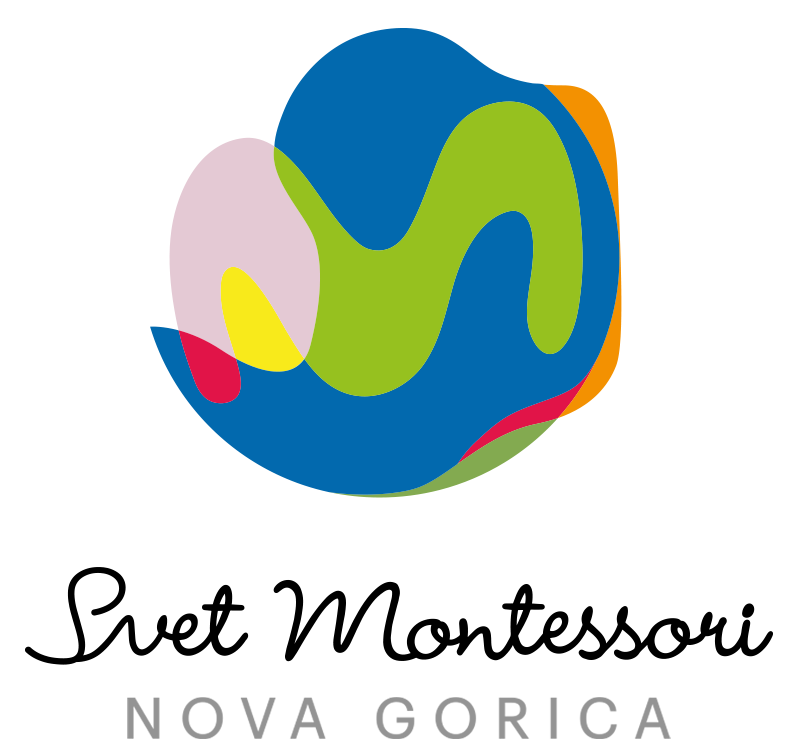
How can I learn more about your institute?
We invite you to come and meet us in person. You can write to us at info@svetmontessori.si or call us by phone +386(0)41 486 998, and we’ll schedule a meeting. We also organise information days once a year for families who are interested in our programme and would like to know more about the Montessori method. We are always available if you have any questions.
Is the Montessori approach suitable for my child?
The Montessori approach is suitable for anyone, as it is designed to follow the inner pace of each child and their development level, stimulating them to develop their best potentials. This was already proven by Maria Montessori, who worked with children at various development levels; children with special needs, talented children, children of different ethnic and cultural backgrounds. She would observe them in various environments and parts of the world, obtaining great progress in their respective development levels.
Why should I enrol my child in a Montessori-based education system?
The Montessori ambience will encourage your child to look forward to a lifelong kind of learning, exploring and creating, giving them the ability to make their own choices while learning to respect themselves, others and the environment.
The Montessori method is based on the fact that a child’s first six years of age are the most important period for their development, as the subconscious learning turns into conscious. At that age, children absorb any impression from their surroundings like sponges (“absorbent mind”) and try hard to gain certain skills (“sensitive periods”). It is therefore very important to offer children a thoroughly prepared environment from a very young age to allow for them to evolve.
What is the difference between the Montessori method and traditional schooling?
The Montessori method is based on an individualised approach; children work with development materials in a thoroughly prepared environment. Children have a central role, while teachers observe them and guide them according to their development levels. There are no traditional school desks or benches and no bell ringing in a Montessori environment; children follow their inner pace, they choose where to work and what to work on.
This way, children soon learn to be responsible for themselves, others and the environment.
What is the difference between Montessori and Waldorf education?
V družbi večkrat pride do zamenjave ali pa enačenja pedagogike montessori z waldorfsko pedagogiko, vendar gre za dve različni metodi. Začetnica pedagogike montessori je bila Maria Montessori, in sicer leta 1907. Od takrat se je pedagogika razvijala in prišla do oblike, kot jo poznamo danes. Začetnik walfdorfske pedagogike pa je bil Rudolf Steiner. Njegovi začetki segajo v leto 1919.
How will a child integrate into a traditional school environment (high school, university) after finishing a Montessori-based school?
This is a frequent question for parents. Children will usually adapt to the new environment without any difficulties, and will work well both individually and in groups. This is due to the fact that children who come from a Montessori environment have not only acquired curricular knowledge, but also skills, such as independence and self-trust, self-discipline, resourcefulness, systematic problem- solving, curiosity, good communication skills and a thirst for learning, all of which allows them to adapt to changes quite quickly.
Of course it’s important to consider that each individual will tackle a change of environment in a different way. We have to be aware that any child who changes schools or education level (eg. from a primary to a secondary school) needs some time to adapt to the new environment.
Is the Montessori programme of the institute Svet Montessori religion-oriented?
No. Any child is welcome to join our Montessori world, regardless of nationality, ethnicity or creed. Our fast-changing and ever more multicultural society is demanding new forms of coexistence. We offer children some essential insight into the world’s main religions, teaching them to respect their own heritage. We give them the tools that they need to develop critical thinking and autonomy. Free choice, alongside the respect for local traditions and the acceptance and inclusiveness of what’s different, is a key factor for a spiritually prolific and peaceful future. Here, we encourage multilingualism and intercultural awareness.
What do lessons in a multilingual environment look like?
Children can learn foreign languages at a very young age. The sensitive period for languages goes from the third to the sixth year of age. During this period children are extremely perceptive for foreign languages. In a multilingual environment, where foreign languages are taught and spoken by native speakers, children get to know and accept a foreign language on a completely subconscious level and in different contexts – such as being taught a core subject in a foreign language.
Does the Montessori method prepare a child for real life?
Preparing a child for life is indeed what the Montessori method of education aims for. Research shows that Montessori children are well prepared for life, both academically and socially. Today’s society requires people who are upright and responsible, who trust their own abilities and who can think for themselves, and these are the very goals of the Montessori approach.


